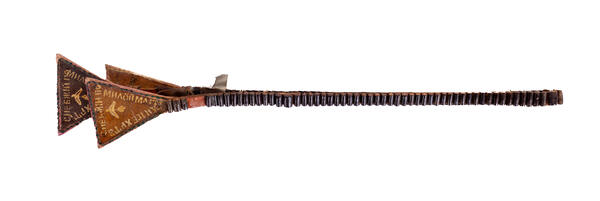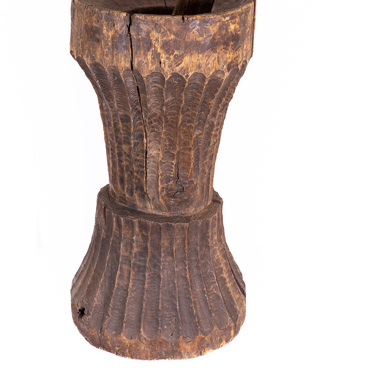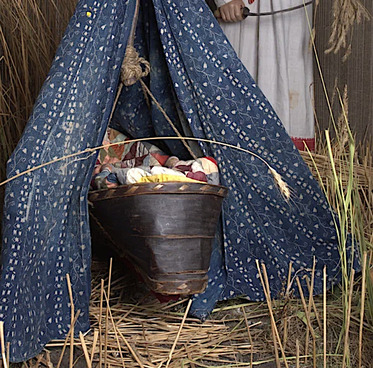Lestovka prayer ropes appeared in Russian culture as early as the first half of the 17th century and are still in use among the Old Believers. The word “lestovka” comes from the Old Russian “lestvitsa” (“ladder”) and means spiritual ascent during prayer.
The exhibit represents a closed circle — a symbol of eternity and a reminder of unceasing prayer. The lestovka ends with lapostki. These are four triangles (four evangelists and three corners symbolizing the Holy Trinity), sewn in pairs at the point where the ends of the rope join in a circle.
The edging of the lapostki symbolizes the Gospel teaching. The seven small movable flaps or beads sewn between the upper lapostki correspond to the seven sacraments of the Church. The triangles themselves were embroidered with a floral design, a Jesus Prayer, or the initial letters of the names of the evangelists.
There is an empty space between the lapostki and the first step, the so-called “ground”, the beginning of the prayer path. Next are 109 large and small steps, or “bobochki”, three in each frame (corresponding to the Holy Trinity). The three large steps serve as dividers between the four groups of small steps, each of which has its own liturgical meaning.
The first 12 small steps symbolize the 12 Apostles of Christ; the next 38 represent the number of weeks the Savior was in the womb of the Blessed Virgin Mary; 33 is the number of years of Jesus’ earthly life, and the 17 small steps, which correspond to the 17 Old Testament prophecies about the birth of Christ. After completing the circle, the praying person arrives again at the empty space, which now means “heaven”.
In addition, the six steps around the edges combined with the three dividers add up to the number nine and refer to the nine orders of angels.
In Old Believers’ communities, prayer ropes were made by special craftsmen or, by the blessing of the preceptor, by the believers themselves. The material used was yarn, cloth, linen, leather, or beads. Nizhny Novgorod was considered a renowned center of producing lestovkas.
There was a stylistic distinction between prayer ropes for men and women. The former ones were usually made in darker colors with embroidered letters of the evangelists’ names; the latter ones were more colorful, with patterned embroidery on the fabric or woven of beads.


